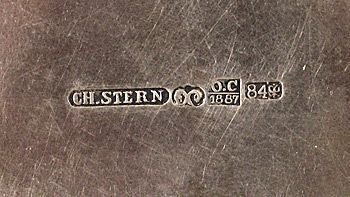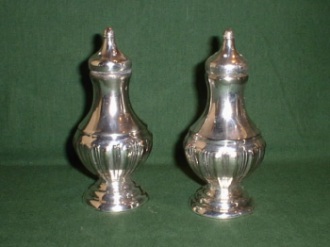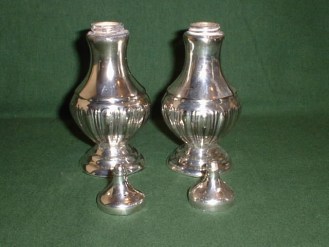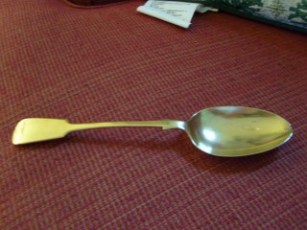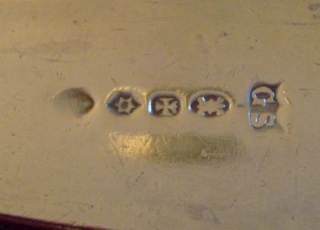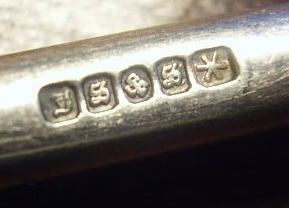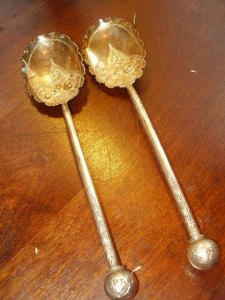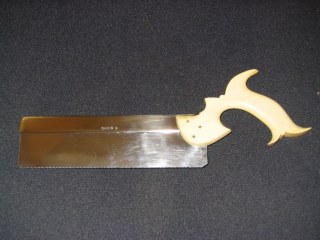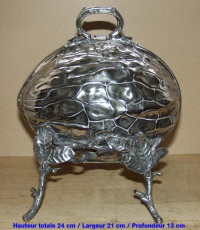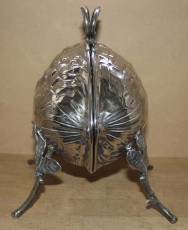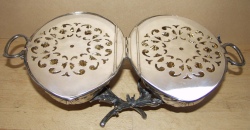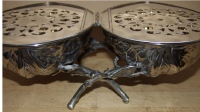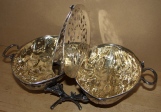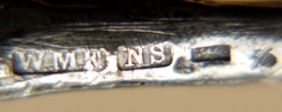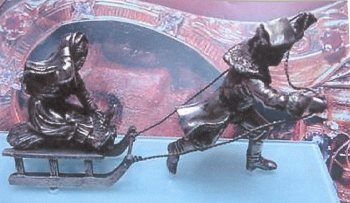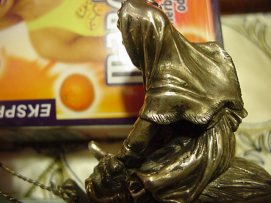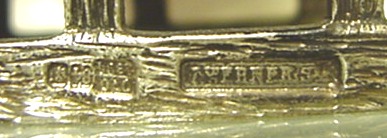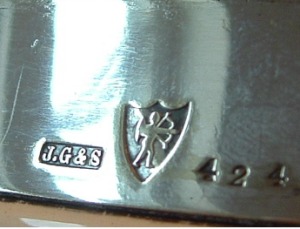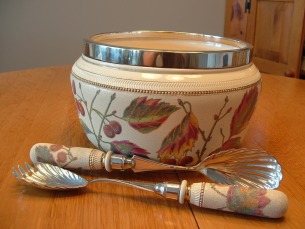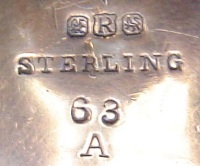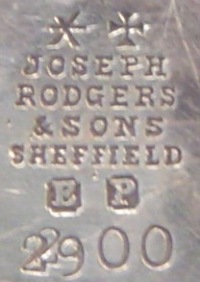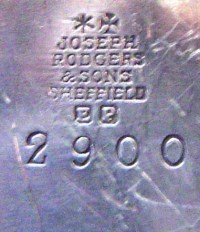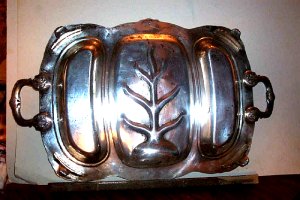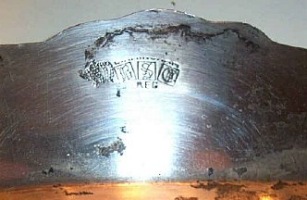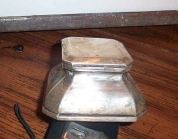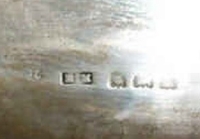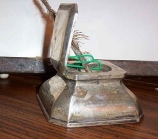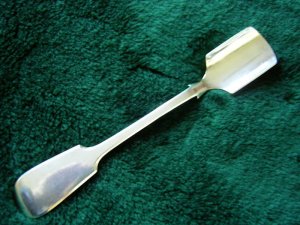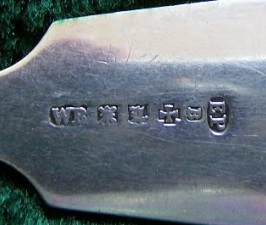 newsletter # 34 - February 2007
newsletter # 34 - February 2007www.ASCASonline.org
email: silverassociation@yahoo.it
YOUR GUIDE TO THE FEBRUARY NEWSLETTER:
articles new members
members' window
|
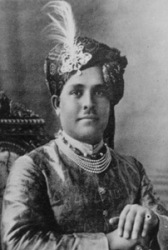
Fredric Sinfield presents: |
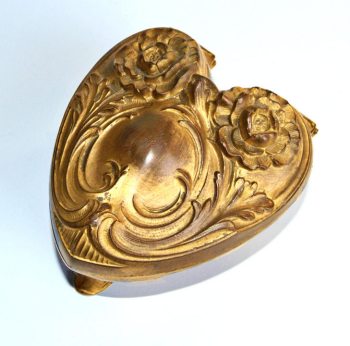 Steven P. Pody and Joanne Wiertella present:
Steven P. Pody and Joanne Wiertella present:Romance in metal: When Love, Beauty, Devotion and Mass Production intertwined Valentine’s Day has, for more than six hundred years, signified that special time for expressing one’s love. It originated in recognition of St. Valentine, a bishop martyred in 270 AD. He was known for going from house to house, leaving food on the doorsteps of the poor. Valentine’s Day became popular in England, Scotland and France, evolving in significance over the years. Chaucer and other early English poets wrote of the country "notion" that birds chose their mates on this day...... click here |
New members
Welcome to new ASCAS members:
Amelia Bellora - Italy
Paule Bane - Australia
Angela Bowey - New Zealand
Joseph Bozzino - Malta
Pamela Coates - USA
Christine Cope - England UK
Denise Dominguez - USA
Wes Fultz - USA
Cameron Gardner - Australia
Faith Gardner - USA
Roberto Giansanti - Italy
Christopher Langdon - England UK
Mary Ellen Lawrence - USA
Valerio Martucci - Italy
Susan Miley - USA
Francine Proulx - USA
Marvin Sokolow - USA
Members' Window # 34
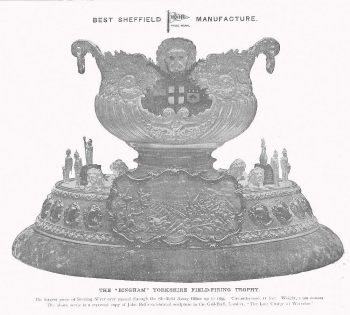
Fredric Sinfield presents: |
Mail to ASCAS: e-mail
silverassociation@yahoo.it
Dariusz Malinowski writes:
...I'm trying to identify the origin of a Russian sugar bowl with the mark as on the attached image.
Any help would be greatly appreciated.
Dariusz Malinowski (Poland)
Ian Cook writes:
I would like to send you the attached pictures of a pair of pepper pots that I picked up
on my travels. Although only silver plated, I thought that might spark some interest among
other members because of the rare base metal used. (Lead)
They do have seams, which apart from the base alloy used could perhaps point them to being of
OSP. Markings on the base are:
W.A.R
S.P LEAD
404
I have tried to research the maker W.A.R, through my documentation, but to no avail.
They are a beautiful design and stand 11cm high. Rather heavy as you can imagine each piece
weighs 266grms.
The screw tops seem very primitive and do not appear to be machine made.
I hope that fellow members can help me to identify and perhaps date the pieces.
Good luck to you and other members in 2007.
Best Regards
Ian
Wes Fultz writes:
I collect smaller items of silver and gold. I have a spoon that I would hope someone in your
membership would be able to identify. I think it is gold but am not sure.
Best regards
Wes Fultz
Victoria and Larry Sherlaw write:
We have two spoons with this unusual hallmark. Can you please identify this hallmark, the
maker, and any other pertinent information you can give us.
Thank you
Victoria and Larry Sherlaw
Janet Rose and Kathy Lattin write:
We have a mystery item that I hope you can help us identify. The piece looks like a small
open handled backsaw, measuring 12 inches from the start of the saw to the end of the handle.
It appears to be silver plate with an elephant ivory handle. There are 4 marks - RR in a
square, an S within a shield, what appears to be a back to back RR or clover like image within a
double pointed shield and then an EP sideways in an oval. We are still searching to identify this
item and we would really appreciate any help you might give us.
Thank you.
Janet Rose and Kathy Lattin
I believe that the maker is Richard Richardson, Cornwall Works, Sheffield but I'm unable to date your piece. I do not know the use of this item and I trust in the support of ASCAS members to reply to your question Giorgio Busetto
Gino Gatta writes:
I found this item in the shape of a nut with WMF marks.
It is high 24cm, wide 21cm and deep 13cm. I'm well aware that it isn't sterling silver but
silver plate but I do not know its use.
Any suggestion by ASCAS members would be greatly appreciated.
Gino Gatta
Ruth Kusiowski writes:
I am trying to find out who the artist is of this 1882 Russian silver sculpture.
It has 84 mark with date 1882 and is signed by an artist unknown to me. It is 3"wide and
7 1/2" long and weighs about 690 grams.
Thank you in advance for your help.
Ruth Kusiowski
Replies to questions
| Leslie Gray receives this reply about
the marks on her Fish Service
( see January Newsletter) there are two hypothesis for this mark: Fredric Sinfield writes: Regarding Leslie Gray's inquiry.
John Sherwood & Sons were Birmingham platers active during the second half of the
19th century.
Hymie Dinerstein writes:
|
| Joan Barrington receives this reply about
the marks on her maker of this bowl and serving spoons
( see January Newsletter) for this mark there are three hypothesis: Fredric Sinfield writes: Regarding Joan Barrington's inquiry.
Hymie Dinerstein writes:
|
| Alfonso Samayoa receives this reply about
Joseph Rodgers & Sons pieces
( see January Newsletter) Hymie Dinerstein writes: Rodgers sugar and Coffee pot are both English Electroplate - probably on Britannia
Metal, which was the least expensive metal to work with and ca.1890 to 1914. The
Cream Jug is American Sterling of the same period. |
| Michael Kaufman receives this reply about
his pieces
( see January Newsletter) Hymie Dinerstein writes: the server is either American or Canadian electro plate, probably made after 1945,
and the inkstand with the rubbed marks was made in Birmingham around 1930.
Maja Heynecke writes:
|
| Wayne Robbins receives this reply about
his cheese scoop with unknown marks
(see January Newsletter) Maja Heynecke writes: reply to Wayne: The cheese scoop could be made by William Brearly - 1863 - 1872.
|
"A PAGE per MONTH"
In this column we present a page (one
page only) obtained from makers' brochures, books, auction
catalogs or whatever other printed paper, which may be of
particular interest for ASCAS members.
The images will be published at a "low resolution" level and for
private and personal use only
This month ASCAS presents a page from the New Illustrated Catalogue
1907-08, The Gordon co., Bridgeport , Conn (image supplied by Joanne Wiertella)
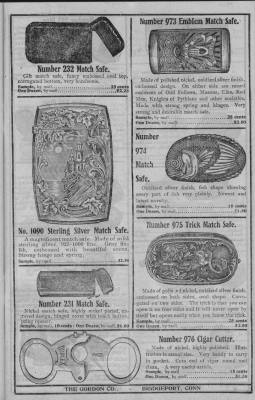
|
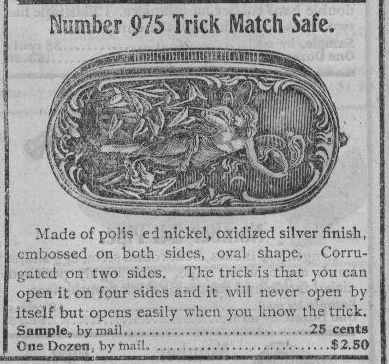
|
"Made of polished nickel, oxidized silver finish, embossed on both sides, oval shape. Corrugated on two sides. The trick is that you can open it on four sides and it will never open by itself, but opens easily when you know the trick."
Who knows what the trick was?"A WORD per MONTH"
In this column we presents an abstract
from a page of the "What is? Silver Dictionary"
courtesy of
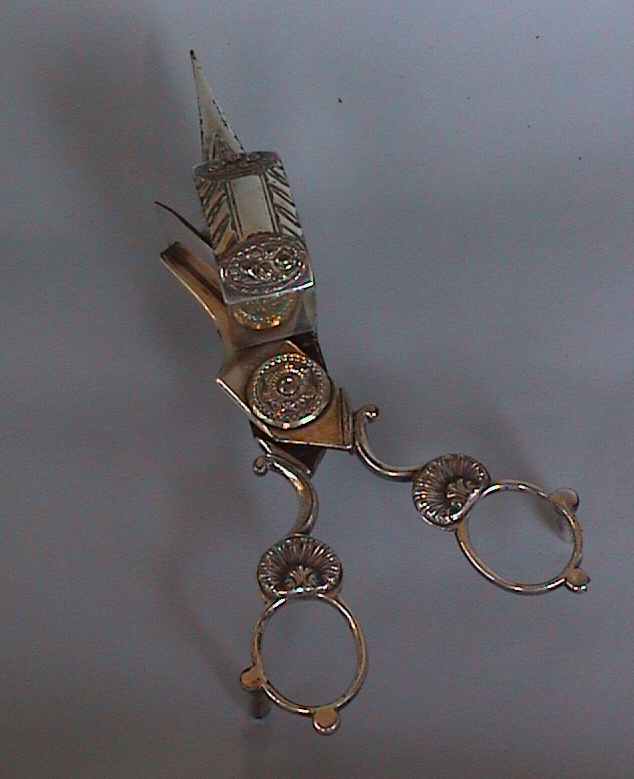
|
CLOSE PLATINGThe 'close plating' is a method of applying a layer of silver foil to tinned steel by heat fusion and burnishing. It was largely used for plating knives, scissors, spurs and the like. The burnishing brought silver to a high finish by rubbing the surface with a hard smooth object such as agate or other hardstone, a dog's tooth or very high grade steel.....more |
Closing our FEBRUARY 2007 edition of ASCAS Newsletter I hope you have appreciated its content.
Your comments, suggestions and advice will be of great help.
My thanks to Steven P. Pody (USA), Dorothea Burstyn (Canada), Ian Cook (UK), Hymie Dinerstein (UK), Jayne Dye (USA), Wes Fultz (USA), Gino Gatta (Belgium), Maja Heynecke (South Africa), Ruth Kusiowski, Janet Rose and Kathy Lattin (USA), Dariusz Malinowski (Poland), Victoria and Larry Sherlaw, Fredric Sinfield (Australia), Joanne Wiertella (USA) for their invaluable contributions.
Giorgio Busetto
Secretary
ASCAS is a community of people having a common
interest in antique silver.
|

